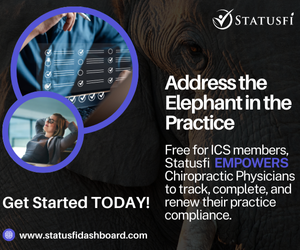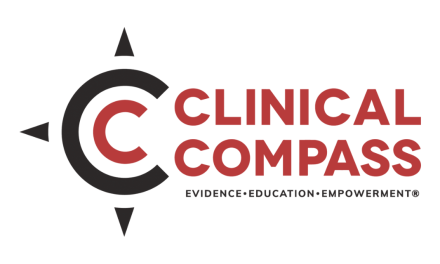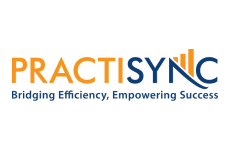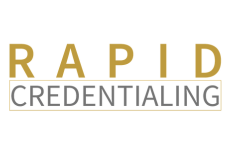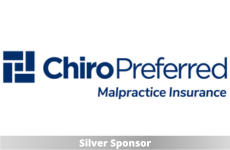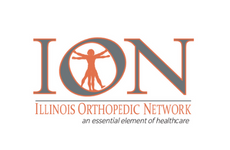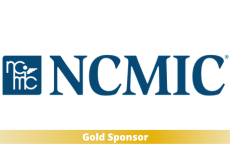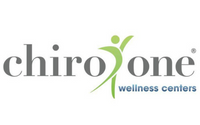
Benefit Verification: Worth the Time, Here’s Why
Benefit verification may be time-consuming, but it’s critical for accurate billing, better patient communication, and cleaner claims. Learn practical tools and smarter strategies to improve your front-end process.
Referenced Links:
More about Practisync
Transcript:
Marc:
Hi, so, Brandy Brimhall, who is the Chief Operating Officer for Practisync, and I have been talking over the course of a number of weeks about all of the things that we can do and doctors can do at the front end of their billing to ensure greater reimbursement, to ensure that they don’t waste time doing things later, to ensure that they continue to have good relationships with patients and the small things that sometimes get missed, that Practisync sees on a regular basis and helps their clients with and we’re delivering it to ICS members. So, Brandy, one of the things we’ve talked about is benefit verification. I hate it. I know that insurance companies don’t stand behind it necessarily, but you see this differently. Talk to me about benefit verification.
Brandy:
You know, benefit verification serves an important couple of purposes that I think we often overlook. One of them certainly is to make sure that we’re set up properly for billing and collections over the counter from our patients, so we know what to expect from the payer in general, what to communicate and how to communicate with the patient, as far as what their balance due is, visit after visit. The other piece to the verification of benefits is that this is an incredible tool, in my view, for patient communications, that they could have a tangible document to show them – this is what the structure of your benefits and limitations of your policy are, because that’s important for them to understand.
Remember, every claim we sent out to the third-party payer, when we get the remittance back, the patient gets a copy of that as well. So this helps us to do our due diligence on the front end, to make sure we’re preparing clean claims, that we know what to expect from our payer, and that we’ve properly communicated, which is required now, even more than it was before, to make sure we’re communicating correctly as best as we can with our patients as to the parameters of their policy. So I do like the insurance verifications. I think it’s important for billers, for the clinics, for the patients, most certainly. And you know, getting, obtaining the verifications is always a challenge, because a lot of clinics say we don’t like to do that because it takes too long, but it is an important piece, I would say to the revenue cycle system, that I do think we’re doing ourselves a disservice if we’re stepping over it.
Marc:
So talk to us. Okay, talk to me and convince me. Because again, I get this is one that irritates me, and because we all know it, insurance companies will say this is what the benefits are, but then they add a note at the bottom, hey, you know, we can’t guarantee the results that really is intended to ensure that the doctors are still delivering medically necessary care, so that, yes, we would cover this, as long as you’ve met the guidelines and requirements. We also know that insurance companies abuse that disclaimer at the bottom, and that can happen, and I see their value in this, but phone calls are time-consuming. Is there another option for our doctors? It would be easier.
Brandy:
So as far as obtaining the verification of benefits, I would say, step one, you want to make sure that you know which plans and products you’re in. Just as a reminder, if you’re in a particular network, Aetna, Blue Cross, Cigna, whatever it is, that doesn’t ensure that you’re in all of the plans and products under that network. So that is definitely something you want to confirm, so that you know with a higher level of certainty that you’re collecting the correct benefits. To start with.
The next thing you want to know is, yes, being on the phone is time-consuming. I’ve done it, especially starting in the 90s. That’s the only option that we had then. You spent a lot of time on the phone, gathering the benefits information. What I think is most valuable to us now is knowing that we do have the ability to go into our portals, our optimum, our availability, our whatever other portals that we have, that we’re using, ash in some cases, and pulling the benefits data. There’s limitations to that, as we’ve all learned, because if we’re pulling chiropractic benefits, we learn the hard way that e/m benefits, films, benefits over X rays for our therapies sometimes are under a different part of the benefits, meaning the patient has a different deductible, different copay, different co insurance, not on all plans, but on some of them. So what I think is the best thing to do is when you’re running into those types of plans. Know that you need to pull the separate set of benefits to gather information on those other categories.
The other thing that I do think is valuable is still you’re going to have to call on some of your payers. Most likely, I like the hybrid approach best. Some of them, you know, these are challenging payers that we need to get someone on the phone and go through and ask the questions so that we can be sure to collect the information that we know that we need, those that we’re not necessarily having so much problem with. Go to those portals and pull our chiro benefits, or pull our chiro’s E/M, and whatever other benefits that may be useful for us. So I do think that payers do give us information, that is they don’t honor if they do give us misinformation. It’s happened to me lots of times. I do think there is a portion of that that is, we’re not collecting all of the types of benefit details that we need to, so we’re ill informed to start with, and then we misinform our patients unintentionally. And so I think being more thorough will help us to close that gap. So that’s one of the things that I would suggest. Another thing I would suggest, most certainly, is to know which plans and products were in the network of so that we’re not gathering or collecting the incorrect information to start with.
Marc:
Right, so in that though, also, and you mentioned, you know, the portals for each one of the carriers, but also, I think, some of the EHRs, and we’re getting better and better. We’re getting more efficient, and some of our systems are getting cleaner and how they communicate, and some of the clearing houses actually have benefit verification options that can be used at the clearing house level. And then some of the EHRs are now communicating with that, so it can be built in. It’s one of the features you may want to ask your electronic health record or your billing system software vendor if they have automatic or easy benefit verification, at least on the electronic side, for those payers that do give cleaner information that don’t require an extensive amount of conversation over the phone, but that is one option.
And then you touched on something else, and gathering the information, I think there has to be this efficient balance. I talked to a friend of mine who has a large number of clinics, and I saw their benefit verification form that they have, and it was about five pages long. It was ridiculous for the number of questions that they ask, and they ask it sometimes the same question about three different ways to make sure that they’re gathering all the information. And I think that that’s that overkill side of that, but I also know why they want to make sure that their entire treatment plan and everything that they are considering for that particular patient, that they have all the best information for. But we do have the efficiency side of this, where it’s built into some of the software now, or it’s available through your clearinghouse. And so that would be something to check on with your clearing house.
Brandy:
Absolutely, it does make it just more efficient. And keep in mind, too, when we do call and have to gather the benefits verification data. The first thing that the representative will tell us is this is not a guarantee of benefits. Benefits will be determined when the claim is processed by every payer, no matter which one you call; that’s their first line. It’s word for word, the same every single time. And I think that makes it extra, extra valuable to make sure that we take that information and communicate it to our patients. So this verification of benefits data that we’re sharing with you is not a guarantee of benefits. Benefits are determined, and I like communicating that with the patients, because it has to be valuable if we hear it on repeat every call we make, that definitely needs to be translated over to our communication with the patient, because it’s part of just being, you know, properly representing what they can expect from their insurance, and, of course, how we’re going to be navigating that insurance relationship on their behalf.
Marc:
You know, that’s a really good point, Brandy, and I would also recommend, you know, one step further, making sure that the patient knows that you’re not telling them that they have this coverage. In this case, you have been told by the insurance company, either electronically or over the phone, or however you gather that information, you’re only the conduit. You’re just relaying to them the information from the insurer. What you don’t want to do is say, you know, as a doctor, hey, Brandy, I just want to let you know you have coverage for X, Y, and Z that we’re going to be performing through your treatment plan. That’s not the appropriate way to communicate this to the patient.
Instead, you want to, you want to indicate clearly that you reached out to the insurance carrier. You can say electronically, or however you’ve done that. And if you have something that actually is in writing, so if there’s a form that they’ve provided you on their portal, if you’ve gathered it that way, I encourage you to hand it to them that they can see that disclaimer in and of itself, and you can say your insurance company has informed us that you have this coverage, and also then, Brandy, you pointed out with the caveats that they give you, but they’re telling us that that’s not a guarantee of coverage. We can’t guarantee that coverage. That way, you don’t create this legally binding problem with you know, where, the where the patient says, Hey, this is what you told me. But instead, if you have this procedure in place, I would even make it a written procedure. How you deliver that information to the patient. That way, you can reference it back if ever challenged. Say no, our procedures are very clear. We do this time and time again, and this is how we communicate the coverage, and if you do it in writing, even better, right? Because then you’ve said that your insurance company says that this isn’t a guarantee of coverage. We can’t guarantee it either. That’s a good point.
Brandy:
Absolutely, and then just remember, you know, the foundation of coverage is that we’ve met the Medical Necessity expectations of the payer. So we want to make sure we know our payers and what their expectations are for medical necessity. So if we don’t know our payers, meaning we’re not reading and reviewing our payer policy guidelines, we could assume there’s coverage for chiropractic or whatever type of care we’re providing, however, there could be limitations in that based upon the payer policy for that type of service, and so get to know your payers as well. It’s going to help you have more confidence in the verification of benefits that you’re collecting.
Marc:
Fantastic. Thank you, Brandy. We’ll catch you all next week.





